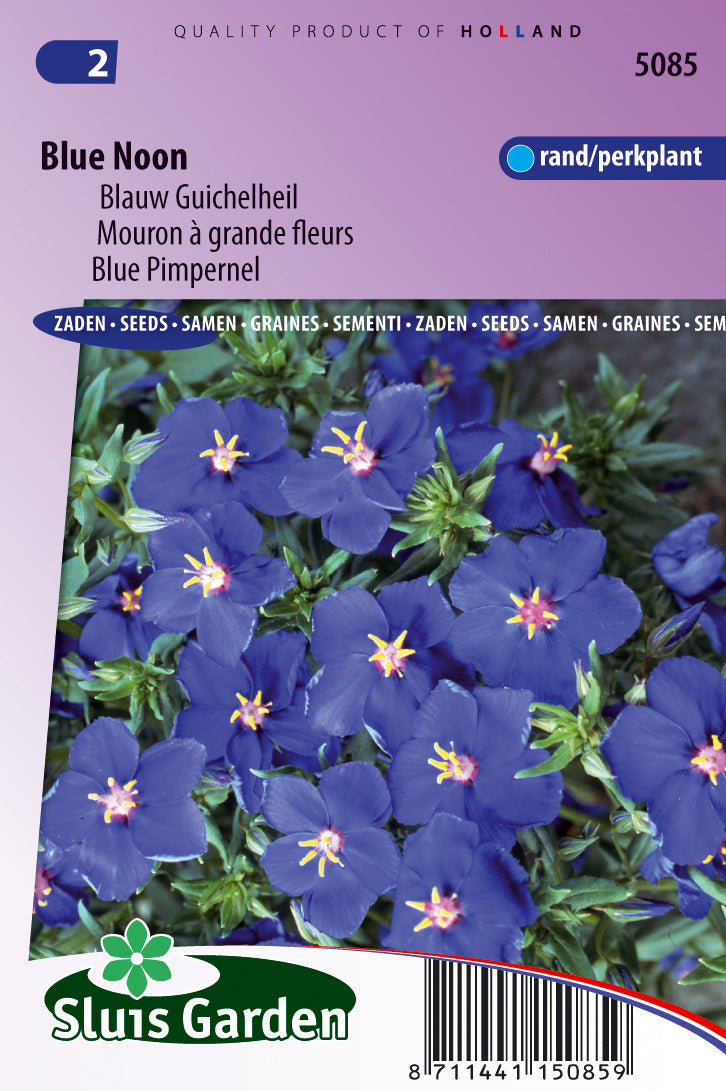1
/
of
1
Anagallis monelli lin. Blue noon
Anagallis monelli lin. Blue noon
Regular price
1.350 KWD
Regular price
Sale price
1.350 KWD
Unit price
/
per
Shipping calculated at checkout.
Couldn't load pickup availability
Anagallis monelli 'Blue Noon,' commonly known as Blue Pimpernel, is a low-growing perennial with striking blue flowers. Here's a guide on how to grow Anagallis monelli 'Blue Noon':
**1. Planting Time:**
- Blue Pimpernel is typically planted in the spring or fall. If you're in a region with mild winters, planting in the fall allows the plant to establish its root system before winter.
**2. Soil Preparation:**
- Blue Pimpernel prefers well-draining soil. Prepare the soil by incorporating organic matter, such as compost, to improve fertility and drainage.
**3. Sunlight:**
- Provide a location with full to partial sunlight. Blue Pimpernel generally thrives in a sunny environment.
**4. Planting:**
- Plant Blue Pimpernel at the same depth it was growing in its nursery container. Space the plants about 8 to 12 inches apart to allow for proper spreading.
**5. Watering:**
- Keep the soil consistently moist but not waterlogged. Blue Pimpernel prefers slightly moist conditions.
**6. Mulching:**
- Apply a layer of mulch around the plants to help retain soil moisture, suppress weeds, and maintain a more even soil temperature.
**7. Fertilization:**
- Blue Pimpernel is not a heavy feeder. You can incorporate a balanced, all-purpose fertilizer into the soil during planting, but additional fertilization may not be necessary.
**8. Pruning:**
- Trim or deadhead spent flowers regularly to encourage continuous blooming and maintain a neat appearance.
**9. Companion Planting:**
- Blue Pimpernel can be planted alongside other low-growing perennials or in rock gardens. Consider its height and color when planning companion plantings.
**10. Disease and Pest Control:**
- Blue Pimpernel is generally resistant to pests and diseases. However, providing good air circulation and avoiding overwatering can help prevent issues.
**11. Winter Care:**
- In colder climates, Blue Pimpernel may benefit from a layer of mulch to protect its roots during the winter. It is often treated as a perennial in mild climates but may act as an annual in colder areas.
**12. Organic Certification:**
- If you wish to officially label your Anagallis monelli 'Blue Noon' as organic, follow the guidelines and requirements set by your local organic certification body.
Growing Anagallis monelli 'Blue Noon' can add a splash of vibrant blue to your garden. Following these guidelines and providing suitable growing conditions will help ensure the health and beauty of your Blue Pimpernel plants.
**1. Planting Time:**
- Blue Pimpernel is typically planted in the spring or fall. If you're in a region with mild winters, planting in the fall allows the plant to establish its root system before winter.
**2. Soil Preparation:**
- Blue Pimpernel prefers well-draining soil. Prepare the soil by incorporating organic matter, such as compost, to improve fertility and drainage.
**3. Sunlight:**
- Provide a location with full to partial sunlight. Blue Pimpernel generally thrives in a sunny environment.
**4. Planting:**
- Plant Blue Pimpernel at the same depth it was growing in its nursery container. Space the plants about 8 to 12 inches apart to allow for proper spreading.
**5. Watering:**
- Keep the soil consistently moist but not waterlogged. Blue Pimpernel prefers slightly moist conditions.
**6. Mulching:**
- Apply a layer of mulch around the plants to help retain soil moisture, suppress weeds, and maintain a more even soil temperature.
**7. Fertilization:**
- Blue Pimpernel is not a heavy feeder. You can incorporate a balanced, all-purpose fertilizer into the soil during planting, but additional fertilization may not be necessary.
**8. Pruning:**
- Trim or deadhead spent flowers regularly to encourage continuous blooming and maintain a neat appearance.
**9. Companion Planting:**
- Blue Pimpernel can be planted alongside other low-growing perennials or in rock gardens. Consider its height and color when planning companion plantings.
**10. Disease and Pest Control:**
- Blue Pimpernel is generally resistant to pests and diseases. However, providing good air circulation and avoiding overwatering can help prevent issues.
**11. Winter Care:**
- In colder climates, Blue Pimpernel may benefit from a layer of mulch to protect its roots during the winter. It is often treated as a perennial in mild climates but may act as an annual in colder areas.
**12. Organic Certification:**
- If you wish to officially label your Anagallis monelli 'Blue Noon' as organic, follow the guidelines and requirements set by your local organic certification body.
Growing Anagallis monelli 'Blue Noon' can add a splash of vibrant blue to your garden. Following these guidelines and providing suitable growing conditions will help ensure the health and beauty of your Blue Pimpernel plants.
Share

